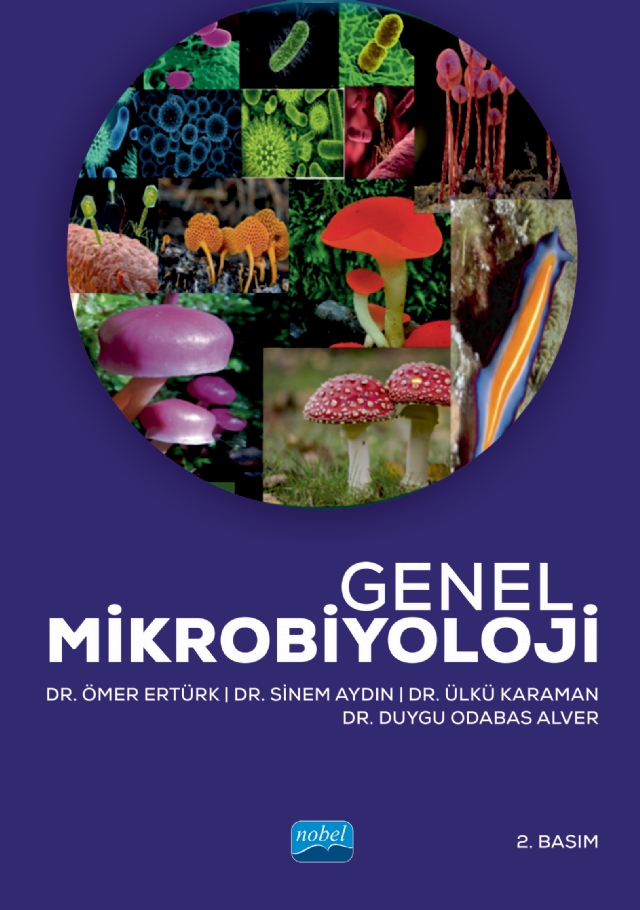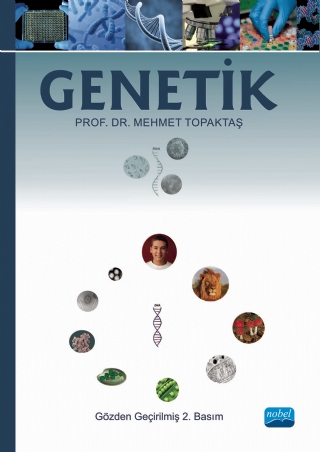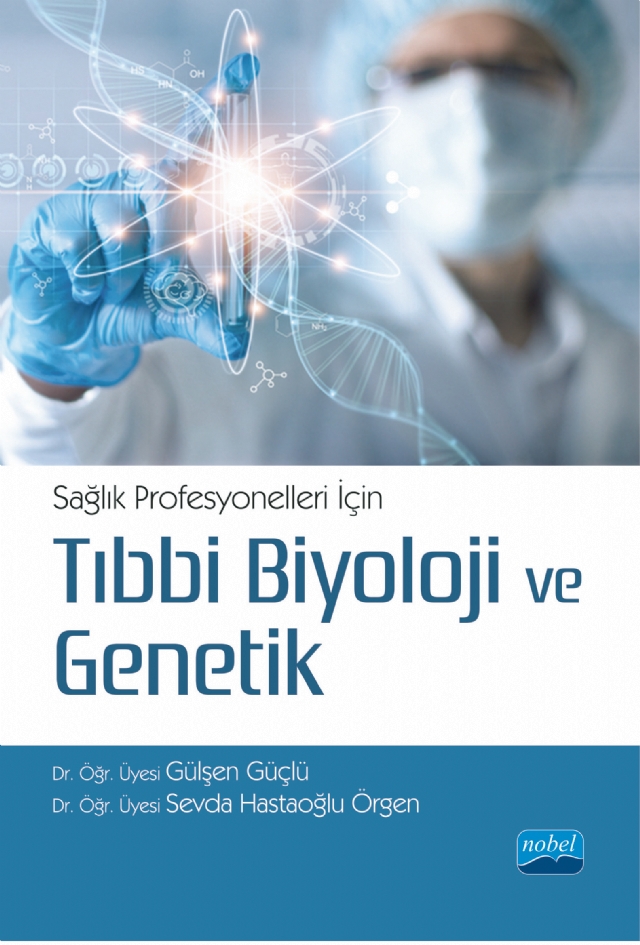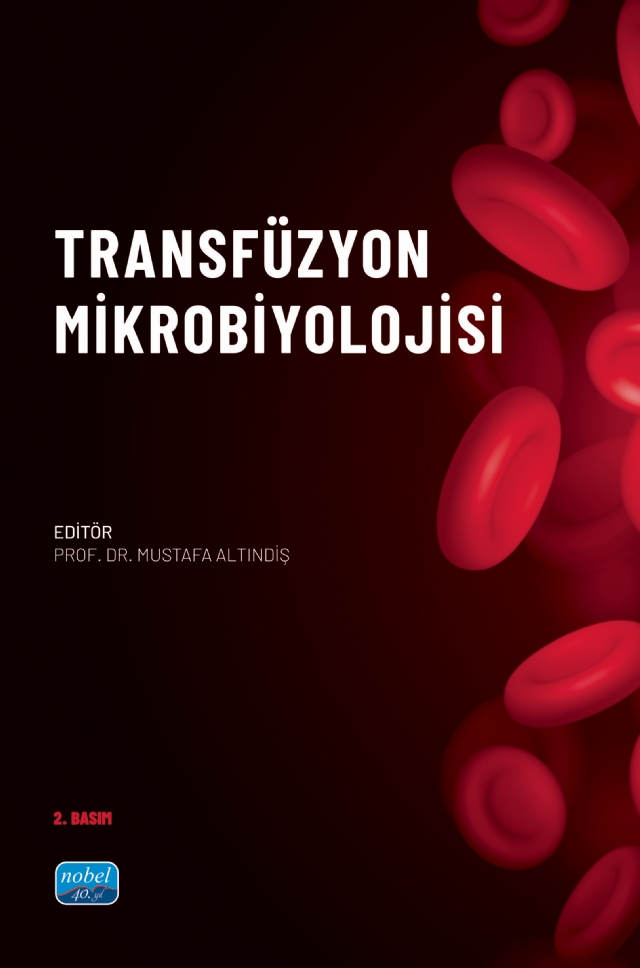Molecular Biology and Genetics \ 1-1

Microbiology has become an important and interesting field for beginners. While learning the content and concepts of basic microbiology, many questions are asked: How do I learn the names of all these microorganisms? What infection does bacteria, virus or fungus cause and which diseases do they cause? How are these diseases treated? In this book, comprehensive information is presented about the information that a student or an academician interested in the field of microbiology is curious about in the field of microbiology. The basic concepts of General and Molecular Microbiology have been tried to be presented in a clear and concise manner that will appeal to students studying in different health fields and academicians interested in microbiology. The topics are written in a plain language, with uncomplicated explanations for difficult concepts. The topics were summarized through tables and figures rather than a long text, and colorful visuals were included for students. In particular, the important points in the reviews were highlighted in the boxes to help the students, and the study questions were prepared to address the relevant aspects of each subject, including clinical cases, and each section was prepared with current developments and information on microbiology. The book starts with a general introduction to microbiology and continues with chapters where general microbiology issues are discussed in detail. All microorganisms are given individually under sections. The sections on bacteria, viruses, fungi and parasites are neatly arranged. Each chapter is presented in color to excite those interested in microbiology and engage them while teaching new information. The book will also be useful in the laboratory applications of the subjects that form the basis of microbiology in the faculties of science, education faculties, medical faculties and dentistry faculties.

Genetics is the science that studies heredity and heredity in living things. In the science of genetics, besides the classic subjects such as Mendel's Studies, there are also rapidly changing fields, such as in the field of Molecular Genetics. The main thing in a genetics book is to provide the latest information in rapidly changing fields along with classical subjects. In addition, the author should reflect his own views on the book after synthesizing the acquired knowledge. For these reasons, I wanted this book to include not only the topics that I teach my students during limited class hours, but also all the basic topics that should be in a genetics book. That's what I tried to do while writing this book. For this reason, it took many years to write the book, and as a result, this work emerged. I hope that my book will add new richness to the knowledge of the target audience.
Target audience for this book:
• Scientists working in the field of genetics,
• Research assistants working on a postgraduate thesis in the field of genetics and students working on a postgraduate thesis,
• Students of the Biology, Molecular Biology and Genetics Departments of the Faculties of Science and Letters, the Science and Biology Teaching departments of the Faculties of Agriculture, Medicine, Dentistry, Veterinary Faculties, Education Faculties,
• Biology teachers of high schools and science teachers of primary schools and
• People from all walks of life who are interested in genetics.
The fact that the book reaches its goal will make me forget all my tiredness.
Target audience for this book:
• Scientists working in the field of genetics,
• Research assistants working on a postgraduate thesis in the field of genetics and students working on a postgraduate thesis,
• Students of the Biology, Molecular Biology and Genetics Departments of the Faculties of Science and Letters, the Science and Biology Teaching departments of the Faculties of Agriculture, Medicine, Dentistry, Veterinary Faculties, Education Faculties,
• Biology teachers of high schools and science teachers of primary schools and
• People from all walks of life who are interested in genetics.
The fact that the book reaches its goal will make me forget all my tiredness.

With the acceptance of cancer as a genetic disease, scientists continue to research cancer in genetic and molecular terms. Clarifying the molecular mechanisms of cell division and proliferation and learning the molecular pathways in the cell indicate that more research is needed on molecular structures to be targeted in cancer therapy.
We hope that the book "Cancer Genetics and Molecular Biology" will be a useful resource containing up-to-date information that will benefit scientists who will do research in this field and our students studying in departments such as Medicine, Molecular Biology and Genetics, Biology, Biochemistry, Pharmacy and Veterinary.
In the book, cancer epidemiology, carcinogenesis, molecular targets and signaling pathways in cancer, cancer genetics and cytogenetics, genes responsible for cancer, the relationship between cellular aging and cancer, cell death mechanisms and cancer, characteristics of cancer cells, cancer types, angiogenesis, metastasis, immunity, plasticity, topics such as cancer stem cells, biomarkers, ion channels and cancer relationship and multi-drug resistance in cancer are discussed.
We hope that the book "Cancer Genetics and Molecular Biology" will be a useful resource containing up-to-date information that will benefit scientists who will do research in this field and our students studying in departments such as Medicine, Molecular Biology and Genetics, Biology, Biochemistry, Pharmacy and Veterinary.
In the book, cancer epidemiology, carcinogenesis, molecular targets and signaling pathways in cancer, cancer genetics and cytogenetics, genes responsible for cancer, the relationship between cellular aging and cancer, cell death mechanisms and cancer, characteristics of cancer cells, cancer types, angiogenesis, metastasis, immunity, plasticity, topics such as cancer stem cells, biomarkers, ion channels and cancer relationship and multi-drug resistance in cancer are discussed.

The development of medical biology and genetics with each passing day contributes to the development of new diagnostic and treatment methods in medicine. This book is a versatile book in which basic and up-to-date information is compiled in the field of medical biology and genetics and the acquisition of knowledge in this field is comprehensively covered. It also provides a framework for students to understand the field of medical biology and genetics, while providing the basis for establishing a continuing education program in this field.
Medical Biology and Genetics for Health Professionals book; I hope it will be a resource for everyone interested in medicine and biology education and will motivate them to take a stronger step towards science and new ideas...
Medical Biology and Genetics for Health Professionals book; I hope it will be a resource for everyone interested in medicine and biology education and will motivate them to take a stronger step towards science and new ideas...

Click to download PDF file
Medical biology and genetics is the science of biology that studies the hereditary character that affects human existence and health. This book has been arranged according to the needs of the departments to be used during the conduct of the "Medical Biology and Genetics" course taught in the first years of Health Services programs and faculties. The selected course contents are handled in a general framework and aim to provide students with a basic perspective on the field. The chapters of the book are planned as seven chapters in accordance with this purpose. In the first three chapters, cell biology and metabolism are explained from simple to complex in the light of current literature. In the following three chapters, the structure and organization of hereditary material are explained and detailed information is given about genetic diseases affecting human health. In the last section, cancer genetics and pathogenesis are explained and the pathophysiological process from gene to cell behavior is discussed as a whole.
Students who are new to higher education have difficulty in understanding the main subjects of medical biology and genetics, which consist of abstract data. For this reason, the topics in the book are explained in an understandable language as well as being embodied with detailed drawings. Although the topics are explained briefly and concisely, they are supported by the current literature.
Medical biology and genetics is the science of biology that studies the hereditary character that affects human existence and health. This book has been arranged according to the needs of the departments to be used during the conduct of the "Medical Biology and Genetics" course taught in the first years of Health Services programs and faculties. The selected course contents are handled in a general framework and aim to provide students with a basic perspective on the field. The chapters of the book are planned as seven chapters in accordance with this purpose. In the first three chapters, cell biology and metabolism are explained from simple to complex in the light of current literature. In the following three chapters, the structure and organization of hereditary material are explained and detailed information is given about genetic diseases affecting human health. In the last section, cancer genetics and pathogenesis are explained and the pathophysiological process from gene to cell behavior is discussed as a whole.
Students who are new to higher education have difficulty in understanding the main subjects of medical biology and genetics, which consist of abstract data. For this reason, the topics in the book are explained in an understandable language as well as being embodied with detailed drawings. Although the topics are explained briefly and concisely, they are supported by the current literature.

In recent years, our knowledge has increased within the scope of research on the molecular basis of diseases. With the use of increasing knowledge in both medical biology and medical genetics, diseases caused by cellular and chromosomal changes, which have a genetic basis, are tried to be understood on the one hand and treated on the other. Written from this point of view, this book covers all topics from the beginning of life to cell death mechanisms under the main title of "Medical Biology". Under the main title of “Genetics”, it provides an integrity starting from the structure of DNA and RNA, including the features of the genetic code, mutations and inheritance patterns. The difference of our book from its counterparts written so far is that the second part includes molecular genetics applications and practical applications step by step. There are six chapters in the "Application" part of the book, in which medical biology and genetics are covered in fourteen chapters. This book, which has been prepared in accordance with the curriculum of the relevant boards of medical faculties, is a textbook that can be used in the relevant departments of health sciences faculties, dentistry faculties and health schools. This book, which has been prepared as a result of intense effort by following up-to-date data in a period of about two years, is a resource that undergraduate, graduate students and all academics can benefit from.

The field of transfusion microbiology is of particular importance since the use of blood, which is still the only source of human blood, as a life-saving medical product when necessary, concerns all parties and processes in terms of patient safety.
Microbiology has always been intertwined with transfusion medicine from the very beginning. With our current knowledge, viral hepatitis and later HIV have been observed as inevitable and persistent complications of transfusions long after the onset and development of transfusion. For more than four decades, blood centers have struggled with the control of these and other transfusion-transmitted microorganisms. In the years before the routine screening of hepatitis (especially hepatitis C), blood transfusions were accepted as the main mode of transmission of these agents. Subsequent HIV transmission could also be a major transfusion tragedy.
All these have taught us that the process must be managed with serious actions in ensuring blood transfusion safety. Today, even more unpredictable factors have emerged, and it seems that they will continue to emerge and besiege humanity.
Microbiology has always been intertwined with transfusion medicine from the very beginning. With our current knowledge, viral hepatitis and later HIV have been observed as inevitable and persistent complications of transfusions long after the onset and development of transfusion. For more than four decades, blood centers have struggled with the control of these and other transfusion-transmitted microorganisms. In the years before the routine screening of hepatitis (especially hepatitis C), blood transfusions were accepted as the main mode of transmission of these agents. Subsequent HIV transmission could also be a major transfusion tragedy.
All these have taught us that the process must be managed with serious actions in ensuring blood transfusion safety. Today, even more unpredictable factors have emerged, and it seems that they will continue to emerge and besiege humanity.